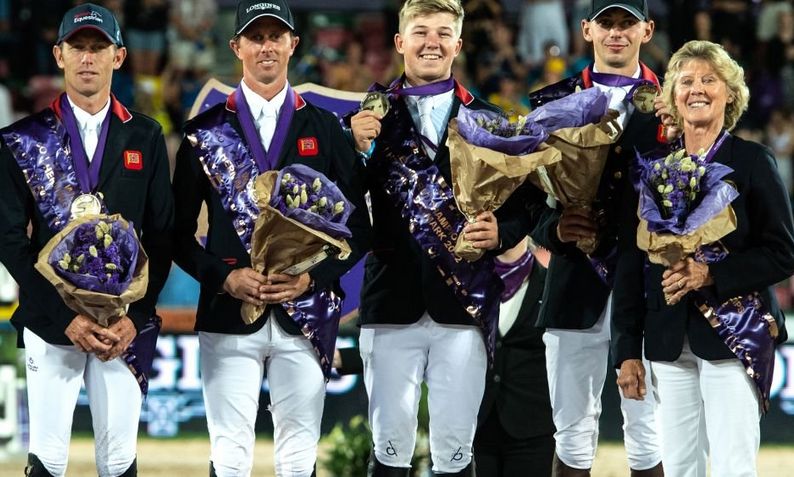
We're proud to say that Naylors is now home to five state-of-the-art Racewood riding simulators. Put your riding skills to the test and combine two of your favourite pastimes shopping and riding in selected Naylors stores nationwide. You'll now find our simulators in Rochdale, Coventry, Swindon, Stockton and Derby stores.
Unlike anything else, our simulators use advanced technology to gather data from you holding the reins, to your leg position and seat balance, using multiple sensors to provide immediate visual feedback for you on screen. They are truly loved by all levels of riders, from beginners to the advanced, and even used by the disabled and those in rehabilitation from a riding or non-riding incident.
Providing multiple software programmes, you can take part in a riding assessment, free ride in the arena, ride a dressage test or a RDA free ride – the choice is yours.
What Racewood have to say about the benefits of the RDA function:
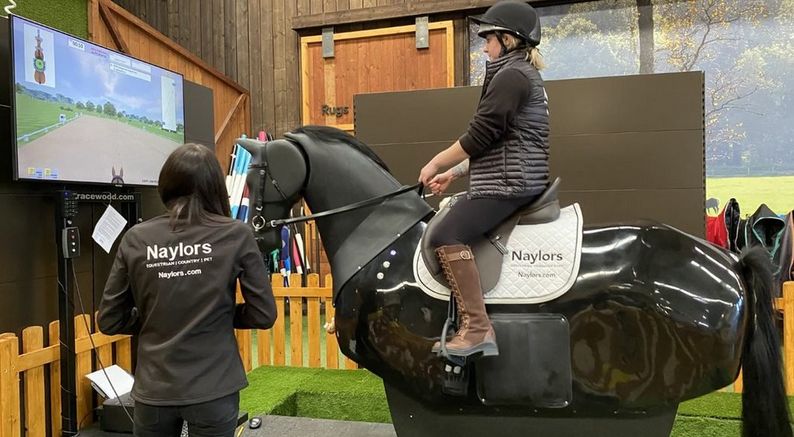
“For many with physical and/or mental disabilities, horse riding offers a therapy that they simply cannot achieve elsewhere. The Racewood RDA Simulator offers the same, rhythmical, life-like motion.” – Racewood
John Hartenfeld’s Inspiring Story and Experience On Our Simulator.
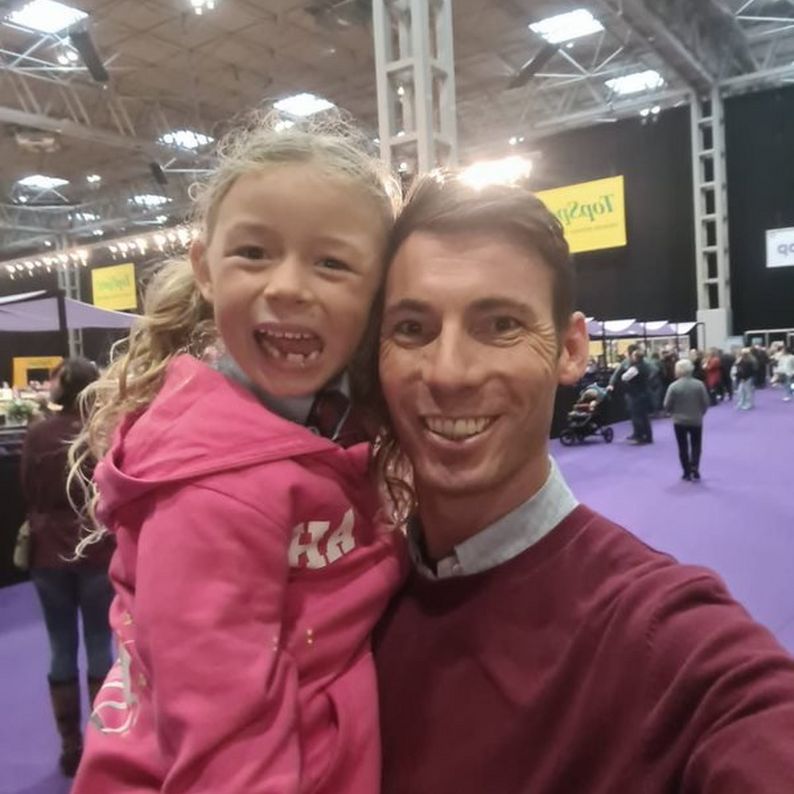

A previous farrier, maritime soldier, and avid equestrian since the age of 3, John’s life got flipped upside down when he experienced a life-changing brain haemorrhage at the age of 30.
Hoping to encourage other equestrians to get back in the saddle, his aim is to “inspire people with my story.”
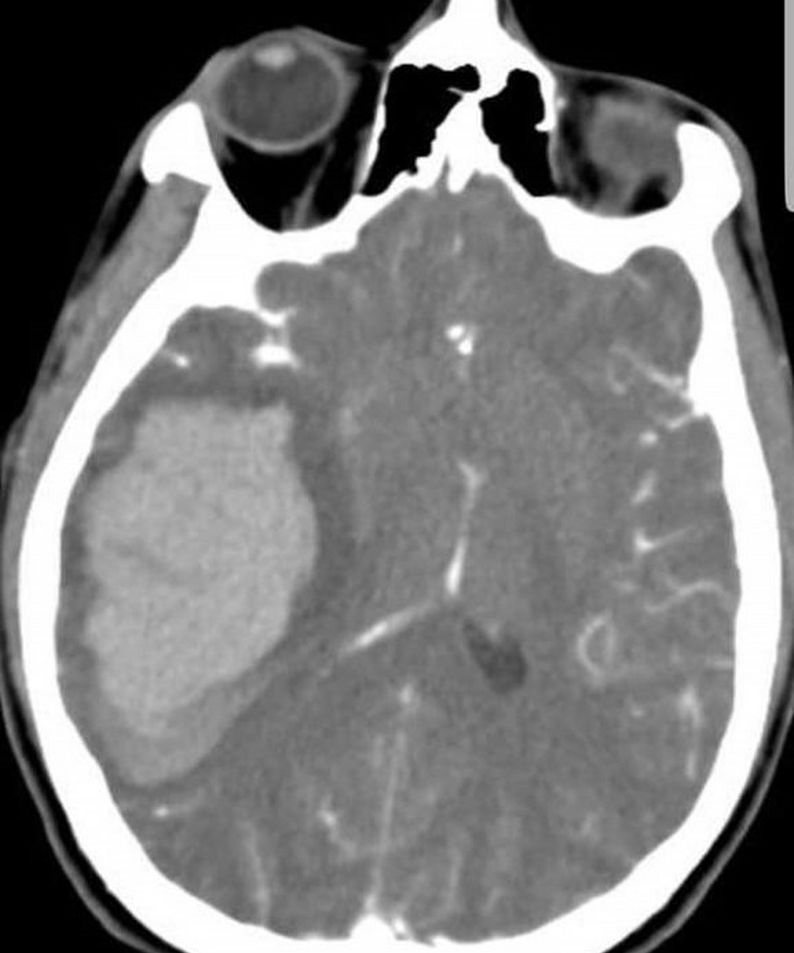

At the age of 30, John decided to debark from the Maritime and leave Somalia and Nigeria for the birth of his daughter, Alice, but only 6 short months later John tragically experienced a brain haemorrhage. Unknowingly born with a birth defect, his condition ‘AVM’ (Arteriovenous Malformation) is an entanglement of brain vessels that can go undetected for many years and erupt at any given moment. John’s GP described his brain haemorrhage as a bomb going off in his brain. Lucky to be alive, John believes the only reason he survived was because how psychically fit he was from riding horses, playing sports and being in the army.
“I woke up 4 to 5 days later in hospital and was paralysed down the entire left-hand side of my body. I was told I’d never be able to walk again, and I’d spend the rest of my life in a wheelchair.” Doctors told him he would likely be in hospital for 12-18 months, however, John’s determination to prove them wrong resulted in him walking out of the hospital only 13 weeks later.
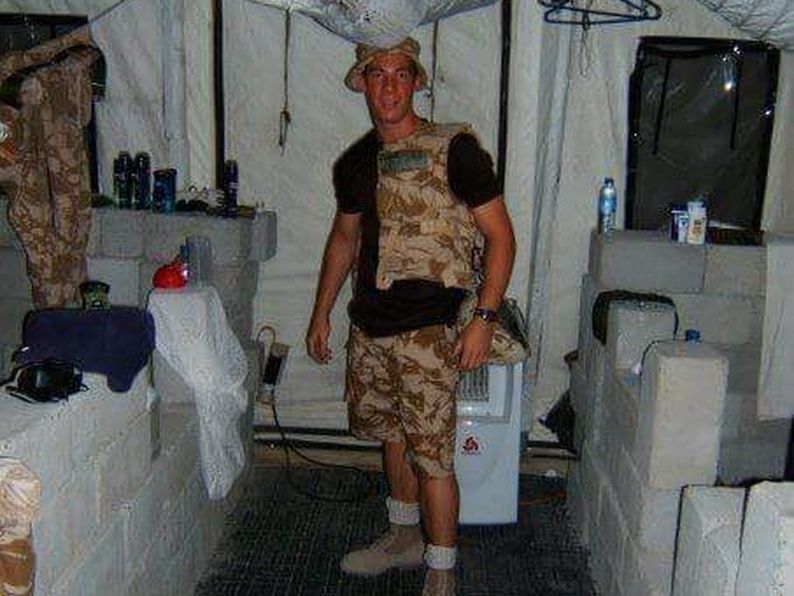
“I told the physio and nurses that I will put 110% effort into being able to walk again, and 7 days later I was back on my feet.” The drive was his 6-month-old daughter... “everything I’ve done is for her.”
After plenty of rest and making up for lost time with his newly arrived daughter, John wanted to put his all into getting his life back to normal.
Life After The Incident
With an invisible disability and very limited feeling down the left-hand side of his body, John had to overcome many obstacles in his rehabilitation.
“They took my driving licence off me due to the lack of my left field of vision in both eyes and I had to learn to adapt. But in August 2021 I got it back after getting it passed through the medical board.”
Getting Back In The Saddle
“When riding horses it’s all about the touch and the feel, but that just isn’t there on my left-side, so I found it really hard mentally and physically.” John decided to go for his Para-equestrian classification, but unfortunately had to put it on hold due to the time and support he needed at the time.

John luckily had great support from his equestrian friends; International Event Rider Ben Hobday and International Showjumper David Andrews Bowen who encouraged him to get back in the saddle and offered their support in doing so. After only 6 months after the incident, John was back in the saddle! “I initially struggled in rising trot, I was okay in canter, but because I couldn’t feel my left foot in the stirrup I had to learn to grip with my knees and change the way I rode subconsciously. Over time, I’d get pins and needles in my left leg from the over simulation of using my knees”.
What is your equestrian background?
“I have been riding since I was 3 years old, competed within the Pony Club up until the age of 18 and went onto show jumping and eventing. My family are equestrians and that’s how I too got into it. I’ve always had and loved horses.”
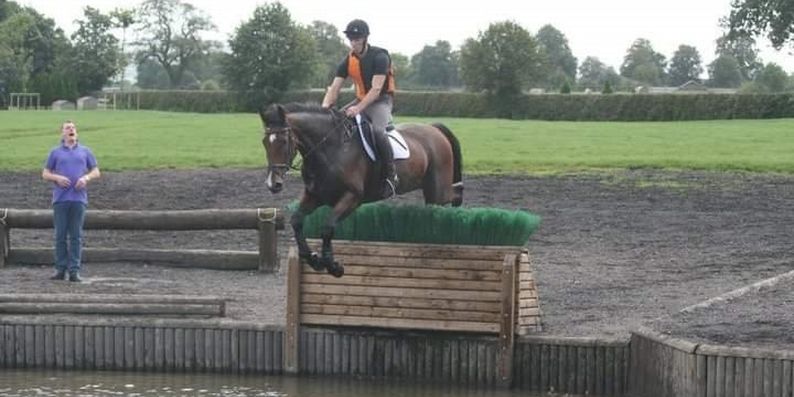
How did it feel when you got back in the saddle after your injury and realised it wasn’t the same as before?
“I’d like to think I was actually quite a good rider. It really did affect me when I realised, I wasn’t ever going to be the same rider. But I think that’s why I went down the route of the para riding, and when I got it, I thought ‘wow that’s an amazing experience!’”
“Before my accident, I was planning on getting a Welsh Section D to start competing in working hunter classes, but my incident kind of threw a spanner in the works, but I would love to get one again in the future. But I’m so pleased my daughter is a rider and I get to live it through her.”

How did it feel to ride our horse riding simulator?
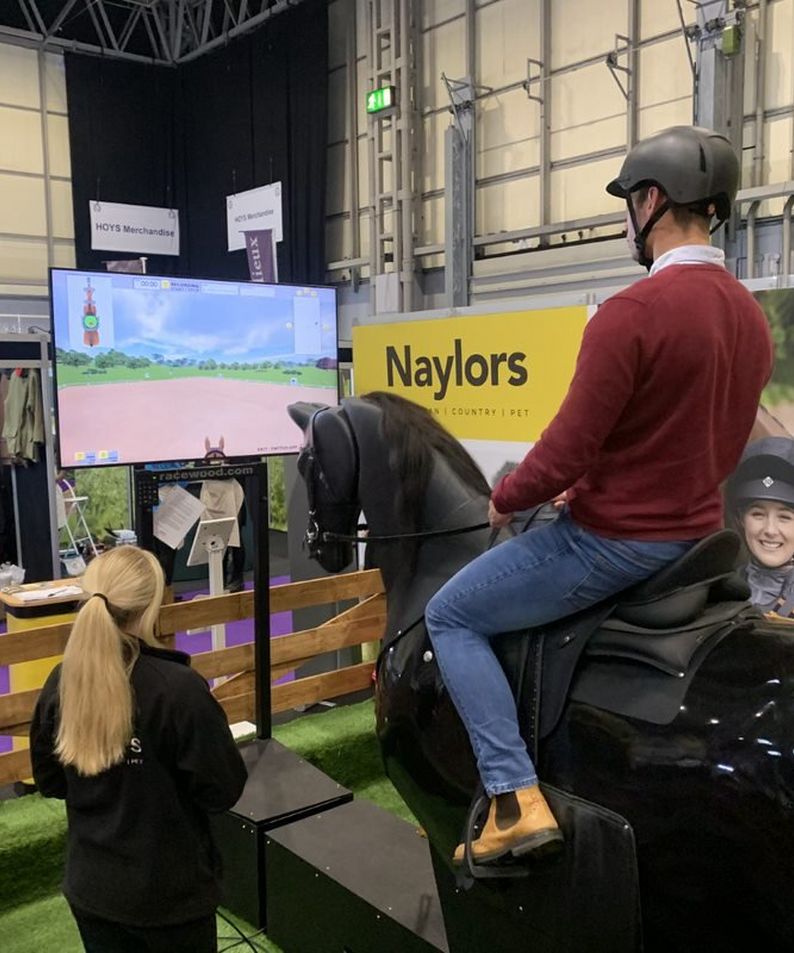
“It definitely didn’t feel as weird as I thought it was going to! It was nice, I wasn’t focusing on my left leg but instead on the screen to try and get my positioning right. It was a great distraction because I was focusing more on my seat position and hand movement to even think about my left leg.
“Everything when riding is controlled by your bottom half, so it’s learning to adapt to my new body. People are doing this every day, look at the para dressage riders, they adapt to how they are. It takes years and years to come to terms with and learn how to adapt, and what’s best for you not just for the horse. So, it was nice to use a simulator and not have to think about the horse but just me as a rider.”
What feedback did you get from the simulator?
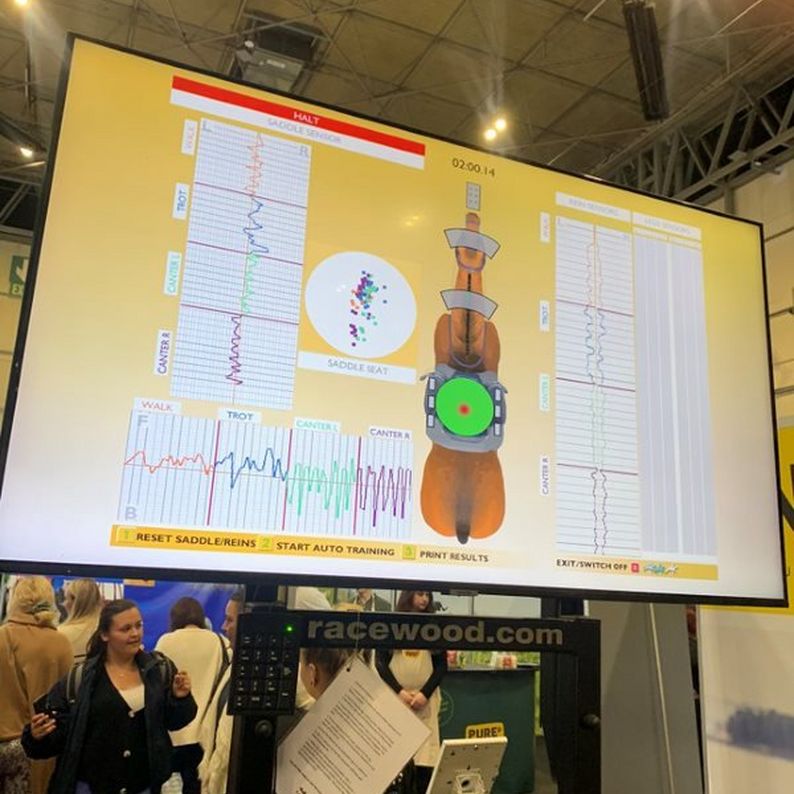
“I was favouring my right-hand side, because that is now is my dominant side, plus I’m right-handed anyway. I wasn’t trusting my left side as much as I should have been because I can’t feel it, so it was interesting to see how my left side and left leg was positioned by looking at the screen.”
“It’s all well and good having a riding instructor to tell you how to ride and what to do, but they can’t feel how you feel so it’s nice to see ‘oh that’s how I’m meant to sit, or I’m leaning slightly to the right for example.’”
How can using our simulator benefit you and others in rehabilitation?
“I think it’s such a great confidence booster because horses are very unpredictable, and people fear getting on and doing something wrong. I wasn’t expecting that at all, it was so realistic. It was reassuring to know if I did do something wrong or pull too hard on the right rein it wasn’t going to ping me off! It was nice to have the confidence that if I did mess up it wasn’t going to really matter. It’s nice to see where I was going wrong and how I can tweak my body slightly to correct it. I did a lot better than I thought I would have.”
“I would 100% consider heading to my local Naylors store to have a follow up ride, to see the progress I can make and also to take my daughter to see who’s a better rider (she’d definitely beat me) it would be a fun day out.”
How does a horse react to your new way of riding?
“If I put too much pressure on and not know, the horse thinks you’re asking for something so it’s harder to ride and learn to ride this way. But using and seeing the leg sensors on the simulator, is a good way of training my brain how much pressure I can put on a horse. So, seeing what my left leg is doing on the screen will make it easier to mimic that feeling on an actual horse.”
What are your plans for riding in the future?
“I’d like to think I’ve overcome everything that’s been thrown at me. I get so much joy from watching my daughter ride, but she’s never known me to ride so I’d love to one day be able to go for rides out with her. I’ve done show jumping and eventing but now I’d love to get into dressage riding. I look at my equestrian friends and think ‘I’d love to be doing that’. There’s nothing better than galloping across a cross country field with a horse between your legs and going for it, it still gives me shivers down my spine because there isn’t a feeling any better.”
Now an emergency responder, at the age of 35, John hopes to inspire others to get back in the saddle and not let their incidents stop them from doing what they love.
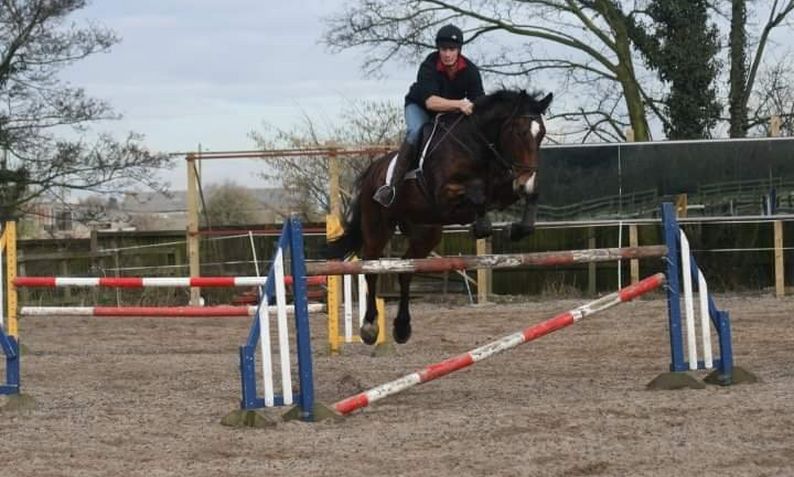
We want to say a huge thank you to John Hartenfeld for sharing his incredibly inspiring story with us.
Have you considered getting back in the saddle after an incident or are you currently in rehabilitation? Do you think the simulator could benefit you or someone you know? Book a FREE 30-minute session at one of our stores here


